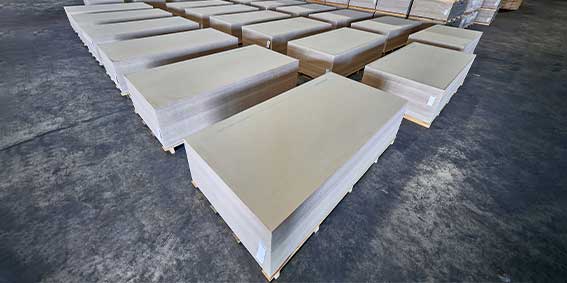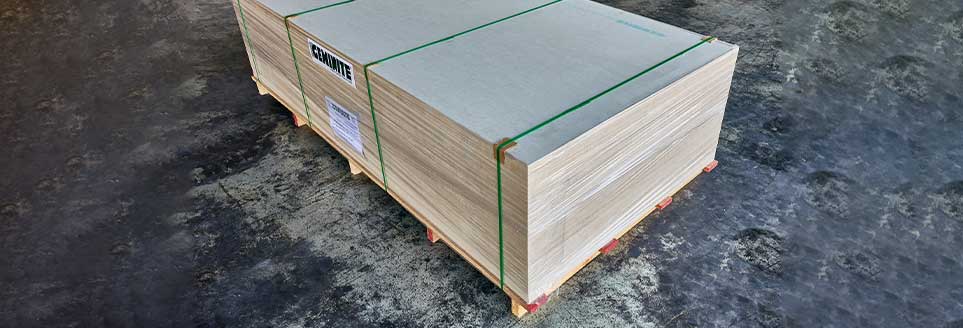27.May.2025
Exterior Cladding Innovations Using Cement Board Panels
Exterior cladding is more than just the outer shell of a building. It protects, insulates, and sets the tone for how a structure is perceived. With rising expectations for long-lasting, low-maintenance, and visually appealing materials, cement board has emerged as a smart solution for modern facades.
From clean-lined commercial spaces to residential buildings exposed to challenging weather, cement board panels bring both structure and style to the surface. In this article, we explore the innovative ways designers and contractors are using cement board for exterior cladding and what makes it such a practical choice.
What is a Cement Board?
Cement board is a composite material made from a mix of cement and reinforcing fibers. It is known for its strength, weather resistance, and dimensional stability. While commonly used behind tiles and in interior settings, it has evolved into a reliable option for exterior cladding due to its ability to withstand temperature changes, moisture, and UV exposure.
Why Cement Board Works Well for Exterior Cladding
1. Weather-Resistant
Cement board doesn’t warp, swell, or crack with changing weather. It resists rain, humidity, wind, and even freeze-thaw cycles, making it ideal for regions with fluctuating climates.
2. Fire Protection
As a non-combustible material, cement board helps enhance fire safety in building design. It is especially valuable in multi-story buildings and structures that need to meet strict fire codes.
3. Long-Term Durability
Unlike wood or vinyl siding, cement board holds its shape and finish for years. It does not attract pests, and it resists rot, mildew, and corrosion.
4. Design Flexibility
Cement board panels come in a variety of sizes, textures, and finishes. They can mimic natural stone, woodgrain, or deliver a sleek, industrial look depending on the desired outcome.
5. Easy to Maintain
With proper sealing and paint, cement board requires minimal upkeep. It doesn’t need frequent repainting or treatments, which helps reduce long-term costs.

Latest Innovations in Cement Board Cladding
1. Pre-Finished Panels
Newer cement board products come pre-painted or pre-stained from the factory. These panels offer uniform finishes, reduced installation time, and better color retention over the years.
2. Fiber-Reinforced Formulations
Modern cement boards are lighter and easier to install thanks to improved fiber mixes. Some products combine cellulose and synthetic fibers to increase flexibility without compromising strength.
3. 3D Textured Surfaces
Textured cement boards replicate the look of stone, brick, or rough-sawn timber. These options give buildings a tactile and organic feel while using a low-maintenance material.
4. Ventilated Facade Systems
Cement board is now commonly used as part of ventilated facades- systems where an air gap separates the cladding from the structural wall. This helps improve insulation, reduce heat gain, and prevent moisture buildup.
5. Hidden Fastening Systems
Modern installation methods allow for hidden screws and anchors, giving cladding a smooth, uninterrupted appearance. These systems also make future panel replacements easier.
Popular Exterior Applications
1. Commercial Building Facades
Office buildings, shopping complexes, and showrooms use cement board to project a modern, solid aesthetic. Panels can be cut into large, geometric patterns for a sleek exterior.
2. High-Rise Apartments
Fire-resistant and weatherproof properties make cement board a trusted choice for high-rise housing. Panels help meet fire codes and reduce ongoing maintenance.
3. Residential Homes
Designers use cement board as an alternative to wood siding, especially in coastal or high-humidity areas. With wood-look textures and long-lasting finishes, it provides curb appeal without the upkeep.
4. Educational and Healthcare Buildings
Durability and hygiene matter in schools and hospitals. Cement board offers a clean appearance, is resistant to impact, and can be customized to suit institutional architecture.
5. Accent Walls and Entryways
For contrast or visual emphasis, designers install patterned cement board on key exterior sections like entry facades or balconies. These elements break the monotony and highlight building features.
Design Tips for Using Cement Board Outdoors
-
Choose Color Carefully: Lighter shades reflect heat, while darker tones add drama. Cement board holds paint well, so custom colors can be used for branding or visual themes.
-
Plan Panel Layouts: Use symmetrical or asymmetrical panel lines to guide the eye and define the structure. Vertical patterns can make buildings appear taller, while horizontal layouts add width.
-
Consider Mixed Materials: Cement board pairs well with glass, steel, or timber accents. Mixed finishes add depth and sophistication to the facade.
-
Use Recessed Lighting: Highlight textures and shadow lines of grooved panels with simple lighting to add depth to the facade after dark.
-
Allow for Expansion Gaps: Always follow manufacturer guidelines for spacing, especially in ventilated facades or large-scale installations.
Environmental Benefits
Cement board’s durability contributes to sustainability. It reduces the need for frequent replacements, which means fewer materials end up in landfills. Many manufacturers also offer products with recycled content, and the material’s resistance to mold and rot means fewer harmful chemical treatments are required over its lifespan.
Maintenance and Longevity
To keep cement board facades looking their best:
-
Inspect joints and fasteners annually
-
Repaint only when needed (usually every 10–15 years, depending on the product and exposure)
-
Clean with mild detergents to remove dirt or mildew buildup
-
Repair minor chips or cracks with cement-based filler for continued protection
Conclusion
Cement board is changing how architects and builders approach exterior cladding. With its ability to stand up to the elements, reduce fire risk, and offer a variety of design options, it has earned its place as a reliable and versatile exterior finish.
Whether you are working on a new commercial build, a renovation project, or a high-end residential facade, cement board gives you the flexibility to design boldly and build responsibly.
Ready to explore high-performance cement board cladding solutions?
Contact us for expert advice, premium materials, and the right products to match your exterior design goals.
Frequently Asked Questions
1. What are cement board panels?
Cement board panels are strong, durable sheets made from cement and fiber reinforcement. They’re used in exterior cladding to protect buildings and enhance aesthetics.
2. Why are cement boards popular for cladding?
They’re highly durable, weather-resistant, fireproof, and require very little maintenance, making them a long-lasting choice for building exteriors.
3. Are cement boards environmentally friendly?
Yes. Many cement boards use sustainable materials and have a long lifespan, reducing the need for frequent replacements.
4. Do cement boards offer design flexibility?
Absolutely. They come in various textures, colors, and finishes, making them suitable for both modern and traditional designs.
5. How fire-resistant are cement board panels?
Cement boards are non-combustible and provide excellent fire resistance, which makes them ideal for safety-conscious construction.

 What is a Cement Board?
What is a Cement Board? 

